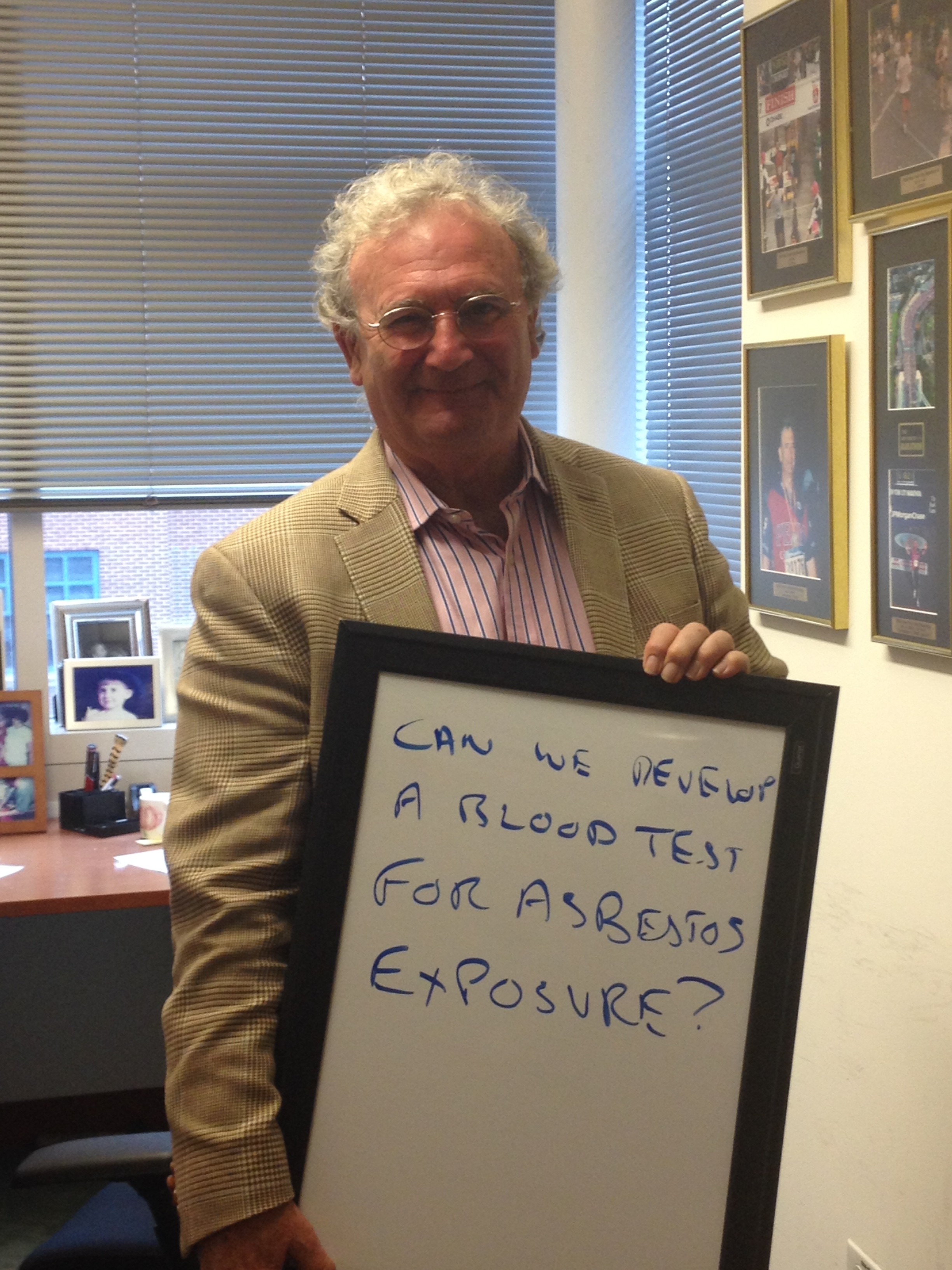Researchers Work with Community to Investigate Asbestos Health Effects in Ambler
Several researchers have recently been awarded a grant from the National Institute for Environmental Health Sciences (NIEHS) to study asbestos exposure pathways that lead to mesothelioma, the bioremediation of this hazardous material, and mechanisms that lead to asbestos-related diseases.
The Penn Superfund Research and Training Program (SRP) Center evolved from community concerns about living near the BoRit Asbestos Superfund site in Ambler, PA. The Penn Superfund Center is academically located at CEET in Philadelphia, about 20 miles South of Ambler.
What is mesothelioma?
Mesothelioma is a cancer that develops in people exposed to asbestos usually affecting the lining of the lungs. Asbestos use has declined dramatically over the past few decades but the incidence of mesothelioma remains steady. The cancer can take anywhere from 20 to 50 years after exposure to asbestos before it shows obvious signs. Many people who have developed mesothelioma can trace their exposure to their workplace because asbestos was used widely for insulation around pipes and in ships and brake pads in vehicles.
How are community members exposed to asbestos?
Workers are not the only group exposed to asbestos. There are some community circumstances that can expose residents. BoRit Asbestos Site in Montgomery County, Pennsylvania straddles the townships of Ambler, Upper Dublin and Whitpain. It exists as a result of waste disposal by the former Keasby and Mattison Company, Certainteed Corporation, and Nicolet Industries, which all produced large volumes of asbestos products including: paper, millboard, electrical insulation, brake linings, piping, conveyor belts, high pressure packings, roofing shingles, cement siding, asbestos cement pipe, automobile parts, laboratory table tops and other products. Various types of asbestos were used in these operations including crocidolite (Blue asbestos), amosite (Brown Asbestos) and crysotile (White Asbestos). Asbestos manufacturing operations occurred on or near the site from 1897 through the late 1980s. Some intermediate cleanup of part of the site has been undertaken, but fraying asbestos products are still observable on the surface of parts of the site, which is adjacent to residential neighborhoods.
The waste disposal sites were known as the “white mountains” and community activities such as sledding and playing on the site were commonly reported in the past.These activities would have led to asbestos fibers being propelled into the air making them available for people to inhale them. Workers, families of workers, and former residents who lived near these sites may have been significantly exposed to asbestos.
What are the health risks of asbestos exposure?
As a result of living in Ambler and/or working in the asbestos plants there, residents of the area face very serious long-term health consequences. The Pennsylvania Department of Health and the COEC at CEET determined an increased rate of mesothelioma in the area compared to other adjacent zip codes. Women had a greater risk than men even though few women worked in the asbestos industry. Our researchers will continue to investigate and work with the community to acquire more information about exposure pathways that led to these health risks. The residents in South and West Ambler remain at risk for environmental exposure and have an increased risk of developing mesothelioma.
Do you want to learn more?
If you would like to learn more about environmental exposure and what we are doing at the University of Pennsylvania, please feel free to explore our website and the target communities page.
The Penn Superfund Research and Training Program (SRP) Center website is currently being developed and will have the most up to date information regarding the Center, the research, and how to get involved.
You can also check out Resources for Education and Action for Community Health in Ambler (REACH Ambler) and the BoRit Community Advisory Group (CAG) Website
How to get involved?
The easiest way to stay involved is to follow the COEC at CEET on Twitter and Like Us on Facebook. We will post regular updates on events all around Philadelphia.
We want to hear from you!
Please share with us any questions you have regarding asbestos or any other environmental health issues by using the comment field, contact us, Twitter or Facebook!
Have a suggestion for a topic to be covered in our blog? Let us know! We would love to cover a topic that you are interested in learning more about!
Follow #IamEH for all of our posts and learn about what environmental health questions are being asked all over the country!





I had no idea that community members get exposed to asbestos too. Asbestos is a serious problem. People should not be taking it lightly.
I hope this message finds you well. My name is Guillermo, and I represent The Mesothelioma Center’s Outreach Department.
As you may know, September 26th marks Mesothelioma Awareness Day, a crucial occasion to shed light on this rare yet deadly disease. We are reaching out to you with a simple request that can make a significant impact.
Would you consider sharing our free informational link about mesothelioma on your resource page?
By doing so, you can help us spread crucial awareness about this disease that affects so many lives.
I encourage you to take a moment to explore our informative pages, such as https://www.asbestos.com/mesothelioma/staging/ or https://www.asbestos.com/mesothelioma. We believe that the wealth of knowledge on these pages can be a valuable resource for your audience.
If you have any questions or need further information, please don’t hesitate to reach out to me anytime. Your support in this endeavor would be immensely appreciated.
Thank you for considering our request, and I eagerly await your response.
Warm regards,
Guillermo